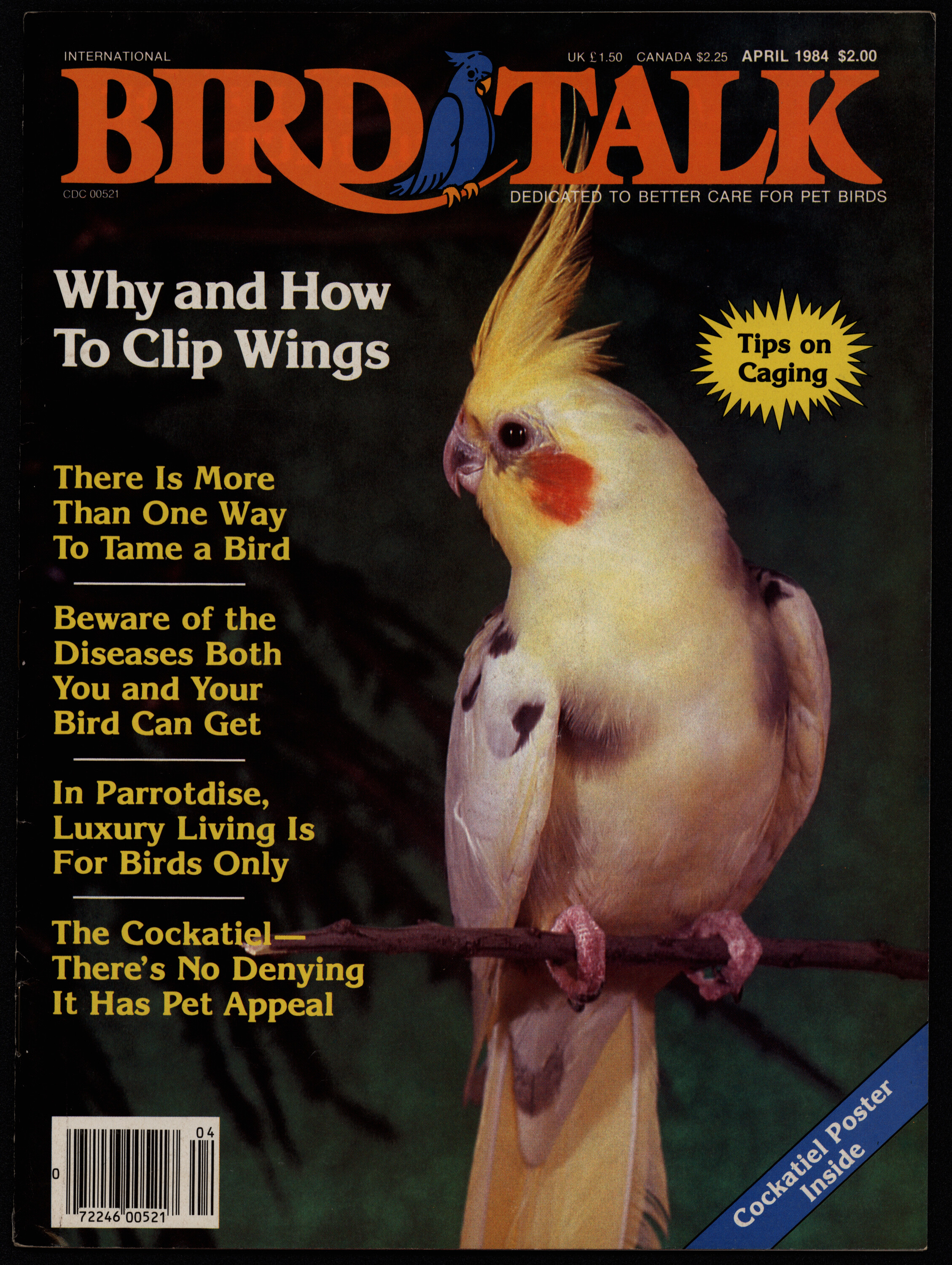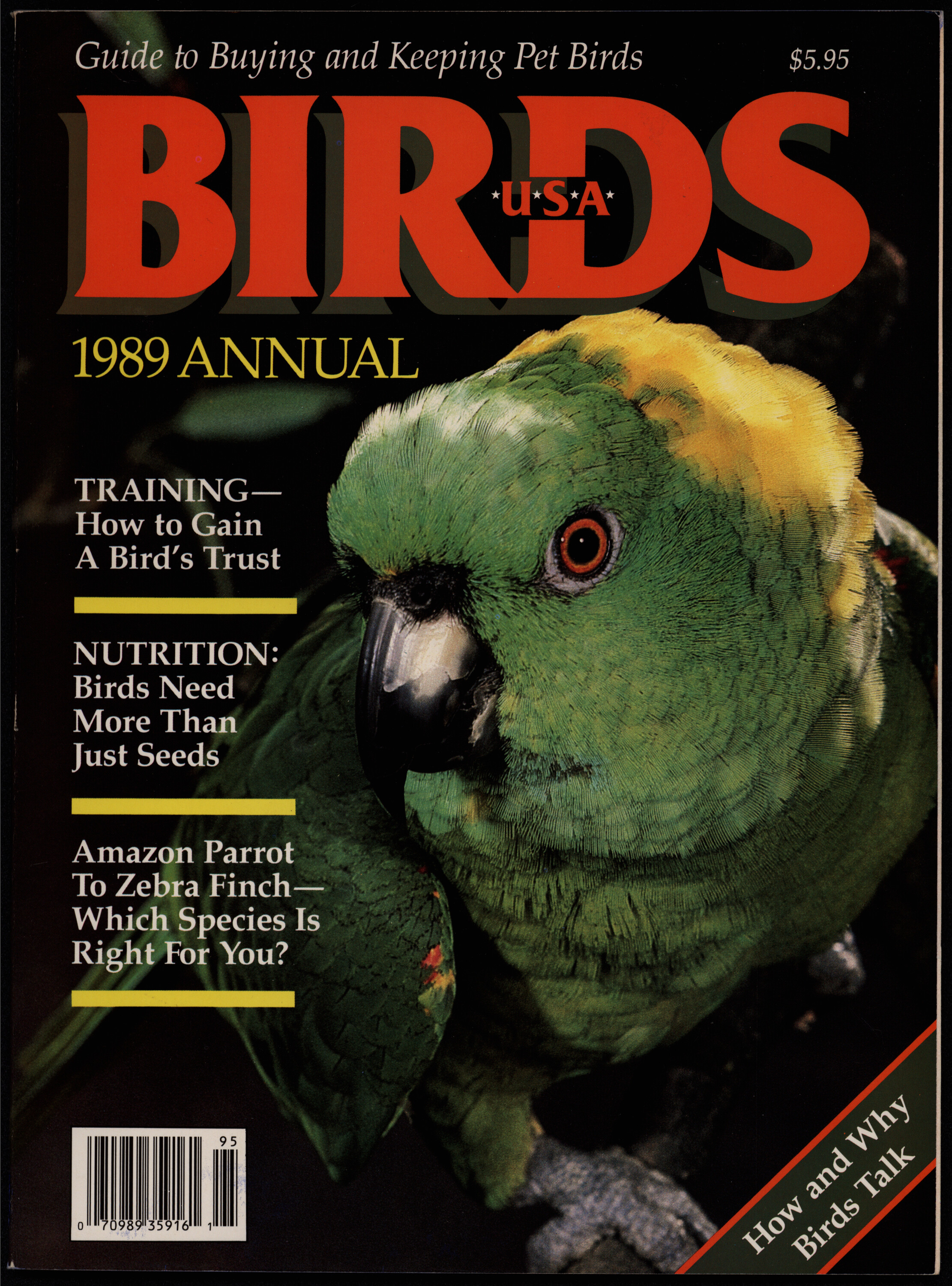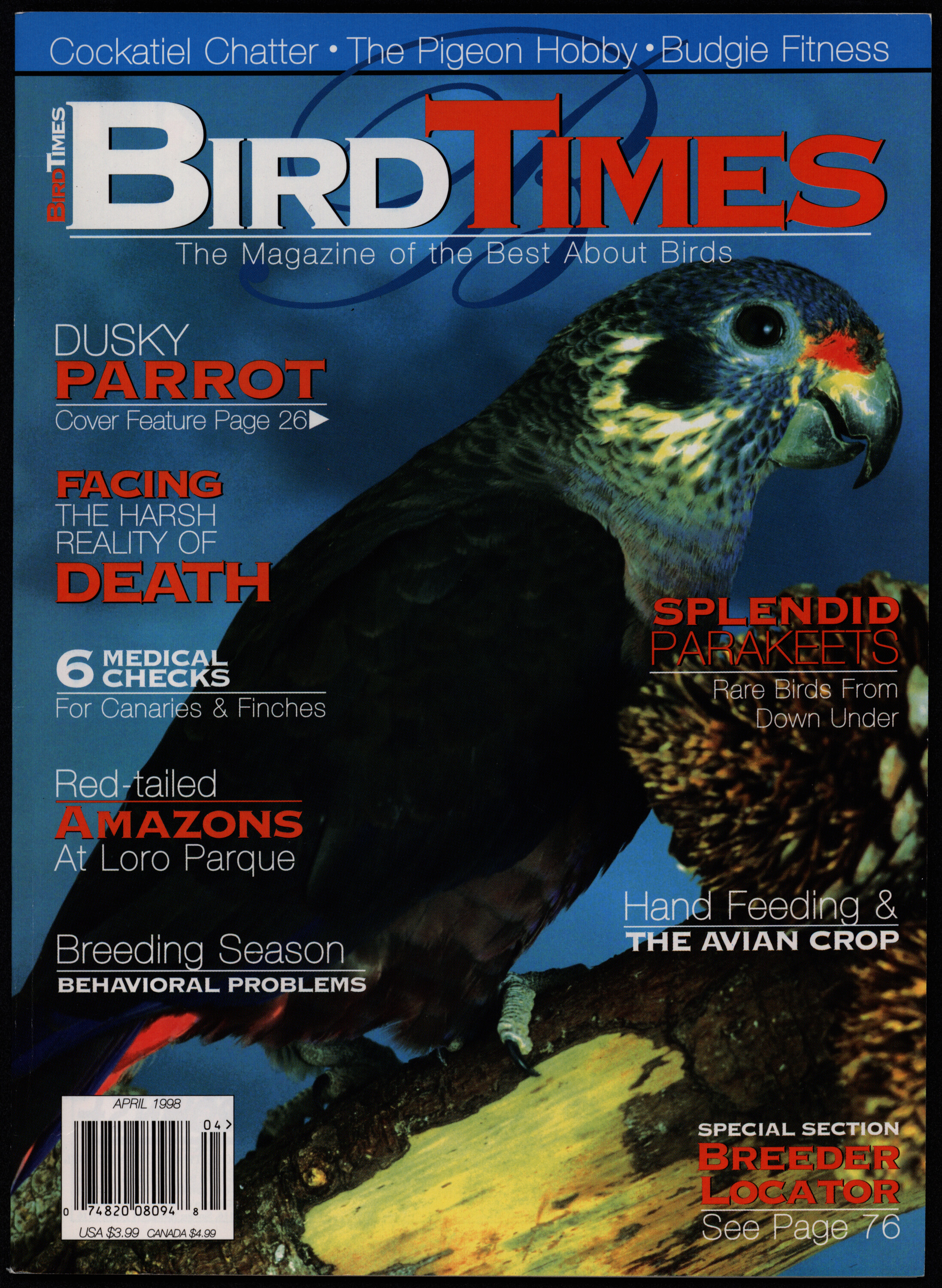Fancy Magazines for Pet Fanciers: Birds, Cats, Dogs, and Ferrets
Birds
Early companion birds were seen in European aristocracy during the 15th and 16th centuries. One of most popular birds during the Age of Exploration was the canary, a songbird from the finch family with vibrant plumage. Spanish explorers brought the bird to Europe in the 15th century. Parrots were kept as pets in many countries for thousands of years. Known for mimicking human speech, parrots and other "talking" birds were beloved pets in ancient Greek and Roman societies. The practice of birdkeeping was continued as Europeans began colonizing North America. Still, birdkeeping was most common for wealthy individuals. This was true until the 19th century, when birds became the most popular indoor pets in the United States. Christal Pollock, avian expert and doctor of veterinary medicine, argues that in a time before radios and television, birdsong helped break the silence in quiet American homes.
While some bird owners began keeping native birds like cardinals or goldfinches, the importation of exotic birds was still prevalent. Not only was the process of importation hard on the bird's health, but some exotic birds were released into native ecosystems. To protect native wildlife, some regulations were placed on the trade of various wildlife. The Lacey Act was signed into law by President William McKinley in 1900, prohibiting the trade in wildlife, fish, and plants that have been illegally taken, possessed, transported or sold. In 1918, the U.S. entered the Migratory Bird Treaty Act with Canada, and subsequently Mexico, Japan, and Russia. This treaty protected a list of migratory birds from illegal trade and trapping across all the signing countries.
In 2024, Forbes reported over 6 million households own pet birds in the United States. Though birds are no longer the most popular pets, coming in fourth place behind dogs, cats, and fish, there has been a spike in bird ownership in the past few years. The American Pet Products Association’s generational report found that Gen-Z are the largest owners of small pets, including birds, fish, rabbits, and reptiles.
Bird Talk, originally published in 1982 by Bell Publications, lasted only three issues. Fancy Publications, publishers of Cat Fancy and Dog Fancy, purchased the magazine in 1984 and relaunched it with a new design. This was one of many animal-fancier magazines that Fancy Publications (later BowTie Inc.) overtook after its founding in 1974. In both the editor’s introduction and throughout the magazine, Bird Talk takes a strong stance against the importation of exotic birds and encourages readers to purchase American-bred birds. The magazine gives bird owners tips on training, diet, cage size, and general care information. One article, titled “The Psychological Benefits of Caring for a Bird,” argues the importance of birds and other pets for mental health. After a 30-year run, the magazine published its final issue in 2012.
Birds U.S.A. is one of the many “U.S.A.” magazines produced by Fancy Publications in the 1980s and 1990s. This 1989 premiere issues states its mission to “share the beauty and pleasure that birds provide, but also to share the facts of life about birdkeeping.” The annually published magazine sought to cover the many facets of bird keeping that Bird Talk could not cover. It is marketed as a periodical containing everything bird owners need to know about buying and keeping birds. One article presents readers with birds that match different lifestyles, encouraging researching birds before impulsively purchasing.
Unlike the bird magazines listed above, Bird Times was not published by Fancy Publications. This issue from 1998 incorporates Caged Bird Hobbyist, another pet magazine from the 1990s. There is not much information on Pet Business Inc, the publisher of Bird Times. The copyright statement for Vol.6 No.2 places the company in Greensboro, North Carolina.
The magazine contains articles on bird care, but a large portion is dedicated to advertising bird products, like food and cages. This carries on the long tradition of bird-related marketing in the U.S., as bird food was the first commercially marketed pet foods in America. Articles like “Dusky Parrot” or “Pigeons & Doves” highlight various breeds and feature full-color photography of birds. The magazine was a member of two non-profit organizations dedicated to protecting birds: American Federation of Aviculture (AFA) and the International Aviculturist Society. AFA was established in 1974 and promotes the advancement of aviculture through educational programs.


